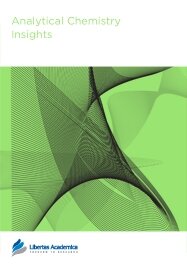

Publication Date: 01 Mar 2008
Journal: Analytical Chemistry Insights

Department of Chemistry, Aligarh Muslim University, Aligarh (U.P.) 202 002, India.
Abstract
Four simple, rapid and sensitive spectrophotometric methods have been proposed for the determination of enalapril maleate in pharmaceutical formulations. The first method is based on the reaction of carboxylic acid group of enalapril maleate with a mixture of potassium iodate (KIO3) and iodide (KI) to form yellow colored product in aqueous medium at 25 ± 1°C .The reaction is followed spectrophotometrically by measuring the absorbance at 352 nm. The second, third and fourth methods are based on the charge transfer complexation reaction of the drug with p-chloranilic acid (pCA) in 1, 4-dioxan-methanol medium, 2, 3-dichloro 5, 6-dicyano 1, 4-benzoquinone (DDQ) in acetonitrile-1,4 dioxane medium and iodine in acetonitrile-dichloromethane medium. Under optimized experimental conditions, Beer’s law is obeyed in the concentration ranges of 2.5–50, 20–560, 5–75 and 10–200 μg mL−1, respectively. All the methods have been applied to the determination of enalapril maleate in pharmaceutical dosage forms. Results of analysis are validated statistically.
PDF (500.68 KB PDF FORMAT)
RIS citation (ENDNOTE, REFERENCE MANAGER, PROCITE, REFWORKS)
BibTex citation (BIBDESK, LATEX)
XML
PMC HTML

I have published more than thirty research papers in internationally reputed high impact factor journals including Libertas Academica publications, Proteomics Insights and Analytical Chemistry Insights. I have no hesitation in saying that Proteomics Insights is highly efficient for its rapid and high quality review process and keeping the authors informed at each stage of the publication process. I recommend this journal for students, teachers and research workers who wish to publish their work. ...

All authors are surveyed after their articles are published. Authors are asked to rate their experience in a variety of areas, and their responses help us to monitor our performance. Presented here are their responses in some key areas. No 'poor' or 'very poor' responses were received; these are represented in the 'other' category.See Our Results
Copyright © 2013 Libertas Academica Ltd (except open access articles and accompanying metadata and supplementary files.)
FacebookGoogle+Twitter
PinterestTumblrYouTube